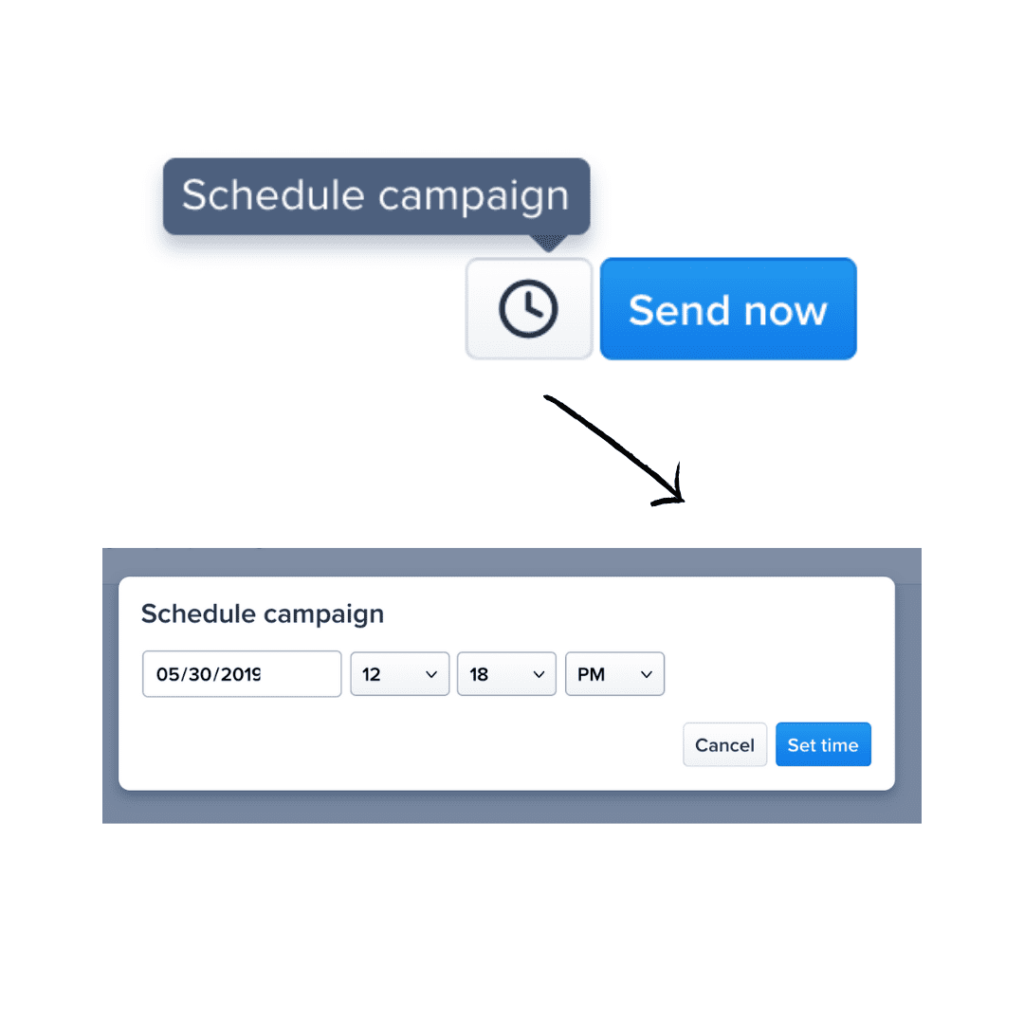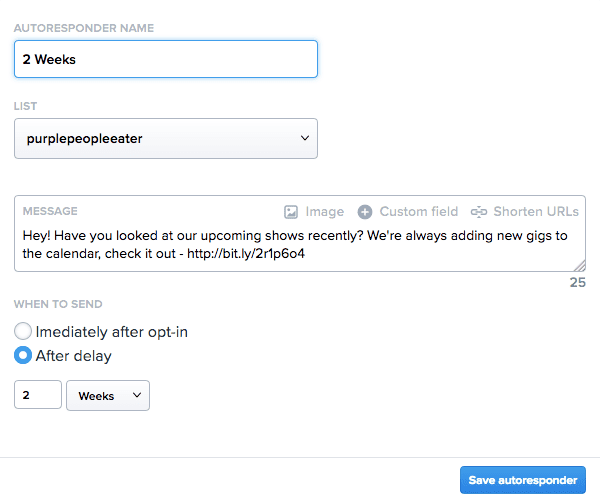The Benefits Of Preprogrammed Text Messages & When To Use Them
Learn about the two main types of preprogrammed text messages, how to work them into your marketing strategy, and when they're the most effective.

Learn about the two main types of preprogrammed text messages, how to work them into your marketing strategy, and when they're the most effective.

It doesn’t matter if you’re a marketing team of 1 or 100, at one point or another you’ve probably felt like there weren’t enough hours in the day. It’s just the nature of the industry. With that in mind, finding ways to get ahead of schedule can feel like mini-vacations.
Marketing automation in itself has become an industry, raising the bar for SaaS providers (like us) to find ways to keep up with the demand for scheduling tools. But with necessity as the mother of invention, many of us have found a way to answer the call with automation tools. Here at SimpleTexting, that comes in the form of text message preprogramming, or scheduled text messages.
A preprogrammed text message is any SMS or MMS communication that is delivered to a recipient without a need for manual intervention to send. In other, simpler, terms- it’s a message that you set and forget.
A preprogrammed text message must be triggered by an action. Two of the most common are:
Both methods of scheduling serve the same ultimate goal: to help you set up text message communications for the future.
So, let’s explore the scheduling actions in a little more depth to reveal the purpose of each kind as well as their most common use cases. Going forward, let’s refer to them simply as the traditional scheduled texts and autoresponders.

For the Alabama Extension at Auburn University’s Supplemental Nutrition Assistance Program, the ability to schedule out a semester’s worth of messaging in one sit down saved their stretched-thin team countless valuable hours.
While it’s not an official kind of preprogrammed text, there’s one additional feature you can layer into your strategy to help save you time. Here at SimpleTexting, we call them templates and duplicates.
In addition to saving you time (and time is money) preprogrammed texts have a variety of other perks. These benefits are also examples of some of the times when preprogrammed text messages can be the most useful:
By creating preprogrammed text messages, you’re in essence creating an extension of you and your team’s abilities. You can reach more customers because, with mass texting, you can be communicating with more than one person at a time!
Unlike a traditional phone call, mass texting sets you off to the races by sending one message out to hundreds at once.
You can only be in one place at a time, but your text messaging platform can be everywhere. For example: say you want a way to capture sales leads with your personal touch. With preprogrammed texting, you can do that without even saying a word or lifting a finger.
Let’s imagine you’re a real estate agent. By using a keyword, you can instantly get back to someone who has expressed interest in a property. With an autoresponder you can follow up regularly with leads without any extra effort.
Envision this:
Integrating text messaging, specifically preprogrammed texting, into your marketing strategy can be easier than you think. Especially if your organization already has a preset marketing calendar.
There are two things you should take into consideration before getting started.
Once you’ve selected a provider and a plan, how you’ll go about setting up scheduled texts depends on them. To help give you an idea, here’s what the process looks like at SimpleTexting:
Traditional Scheduled Texts
1. Navigate to Messaging > New campaign. Once you’ve given your campaign a name, selected your intended recipients, and composed your SMS message, click Next.
2. On the next page, select the Clock icon.

3. Choose the date and time you want your message to be sent out, then click Set time. Take note of the time zone, which can be changed in your settings.

4. Double check the time and date, and your message, just to be sure. If everything looks good, click Confirm and schedule! Done. Our platform will take care of the rest.

Autoresponders
After logging in to SimpleTexting, navigate to Messaging > Autoresponders. In this view, you can see all your active autoresponders. To create one, click New autoresponder and give it a name—don’t worry, this won’t be visible to contacts. Then, choose a list to send updates to, and set the delay time for the message (you can choose from minutes, hours, days, weeks, and months). Finally, compose your message and click Save autoresponder to make it active.

Who knew the power a delay could have?
Of course, all of this sounds great in theory, but what does it look like in practice? If you’re looking to find out, give SimpleTexting a try for free, for 14 days.
Our team can walk you through the process of creating automated messages catered to your unique marketing goals.
Meghan Tocci is a content strategist at SimpleTexting. When she’s not writing about SaaS, she’s trying to teach her puppy Lou how to code. So far, not so good.
More Posts from Meghan TocciLooking to build an SMS marketing list filled with truly interested contacts who won't report you for spam? You should try a double opt-in process.
ReadLearn how to capture (and keep) more mobile site visitors with these effective mobile engagement tips.
ReadStart a text marketing campaign or have a 1-on-1 conversation today. It's risk free. Sign up for a free 14-day trial today to see SimpleTexting in action.
No credit card required